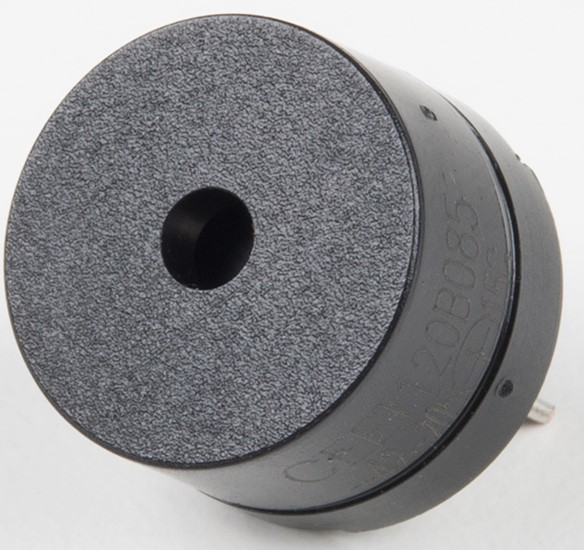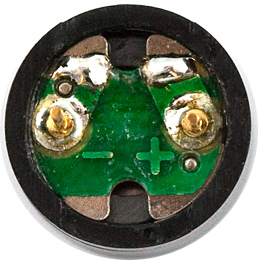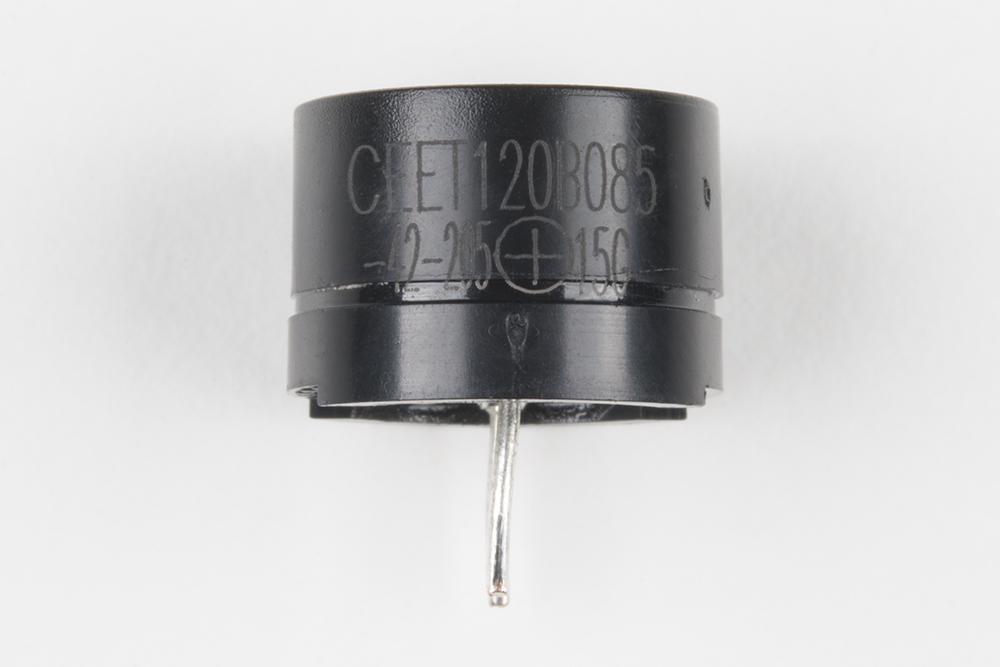Sound and Piezo Buzzers
Sound and Piezo Buzzers

Quick Review: Sound Frequencies

- Sound is created by vibrations in air pressure (sound waves)
- Commonly we measure the amplitude (volume) and the frequency (perceived pitch)
Piezo Buzzer

Piezo Buzzer
- Uses magnetic coil to vibrate a metal disc to produce sound
- Control the pitch by a form of pulse width modulation (PWM)
Uses of piezo buzzers
- Buzzer are small and cost-effective
- Can be used for alarms, games, toys
- Can produce tones and simulate single notes
Limitations of Buzzer
- Frequency
- Human hearing is roughly 20 Hz to 20,000 KHz
- Hertz (Hz) is cycles per second
- Piezo buzzer operates up to 2.048 KHz
- Sound Quality
- Only generate tones through square waves
Connecting Buzzers

Connecting Buzzers


- Buzzers are polarized so look for the +
- Negative pin to gnd and positive pin to Photon 2 output
Producing Sound
Syntax
tone(<<PIN>>, <<FREQUENCY>>); // will play tone indefinitely
tone(<<PIN>>, <<FREQUENCY>>, <<DURATION>>);
-
tone()generates a square wave using PWM (50% duty cycle) -
pinis connected the speaker -
frequencyis sound frequency in Hz (20Hz to 20KHz) -
durationis the length of tone in milliseconds
Producing Sound
Example
tone(D6, 500, 1000); // play 500Hz tone for 1000ms (1 sec)
tone(D2, 2000, 3000); // play 2KHz tone for 3000 ms (3 sec)
tone(D2, 1000, 0); // play 1KHz tone (don't stop)
A Note on Photon 2 and tone()
tone()requires a pin that supports PWM- Only certain pins support PWM
D1(SCLorA4)A2A5MISO(D16)MOSI(D15)
- All PWM pins on the Photon 2 are assigned to the same timer, meaning you can only generate ONE frequency at a time. In other words, you cannot play different notes with different buzzers at the same time.
Stopping Sound
Syntax
noTone(<<PIN>>);
- To stop a continuous tone or stop tone before duration is over
A Note about Tone and Blocking
tone()is non-blocking (meaning it doesn’t cause delays or interfere with other Photon 2 actions)- This means the Photon 2 will not wait for one
tone()to finish before playing the next. For example, in the code below, even though the first tone has a duration of 1 sec, the second tone will start immediately, meaning you will hear the second tone
tone(D6, 500, 1000);
tone(D2, 2000, 3000);
- In order hear a tone for certain length of time, we either need to use a
millis()timer ordelay()
Optional: Controlling Volume

Optional: Controlling Volume
- All tones will be at the same volume since Photon 2 can change only frequency (not amplitude)
- To control volume, connect a potentiometer between
negativeandgnd - Potentiometer acts a current limit resistor to control volume
Playing Melodies
- Musical notes can represented as constants
- Add this file (pitches.h) to your
srcfolder and then add#include "pitches.h"to your sketch - You can then refer to music notes in the following manner
tone(D2, NOTE_C4, 1000); // play the note "middle C"
Finding Notes of Popular Songs
- Notes for some popular songs (note that the format for playing notes is different in this code, but you can still extract the notes and duration from these examples)
- MIDI to C converter allows you convert a MIDI file directly into
References
- Images created with Fritzing
- Pixabay
- Sparkfun
- Neuton Foo